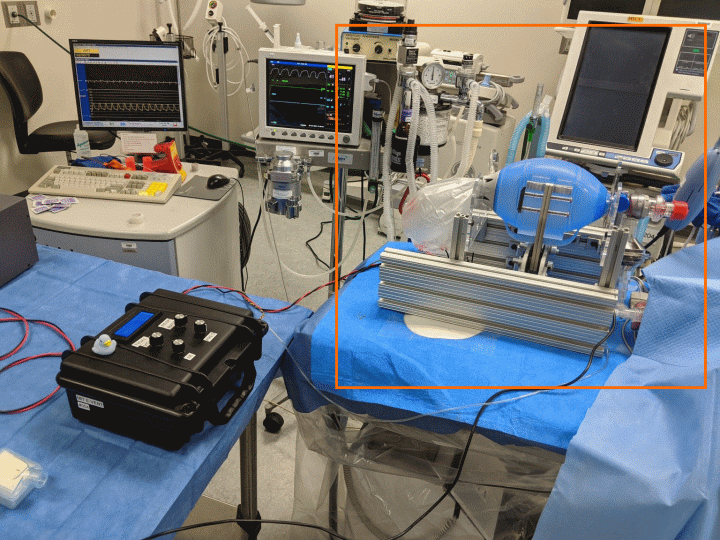
[HT: MIT, fair use; highlight added]
As MIT suggests,
Almost every bed in a hospital has a manual resuscitator (Ambu-Bag) nearby, available in the event of a rapid response or code where healthcare workers maintain oxygenation by squeezing the bag. Automating this appears to be the simplest strategy that satisfies the need for low-cost mechanical ventilation, with the ability to be rapidly manufactured in large quantities. However, doing this safely is not trivial.
Use of a bag-valve mask (BVM) in emergency situations is not a new concept. A portable ventilator utilizing an ambu-bag was introduced in 2010 by a student team in the MIT class 2.75 Medical Device Design (original paper here and news story here), but did not move past the prototype stage. Around the same time, a team from Stanford developed a lower-cost ventilator for emergency stockpiles and the developing world. It looks similar to a modern ICU ventilator (Onebreath), but “production for US hospitals would start [in] about 11 months”, making it “a second wave solution” (MIT Tech Review Article). Last year, the AMBU® Bag concept was re-visited by two student teams, one from Rice university (here & here), and another Boston-based team who won MIT Sloan’s Healthcare prize (MIT News: Umbilizer). Other teams currently working on this challenge can be found linked on our “Additional Resources” page.
If this works, it can be a game changer on the ventilator crisis. Obviously, it does not replace normal ventilators but it would be rapidly deployable in logistically significant quantities.
Where, it is based on common technology, it simply mechanises what a health care worker would do.
Again, a point of hope. END